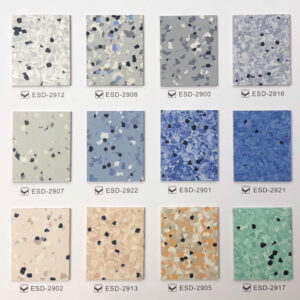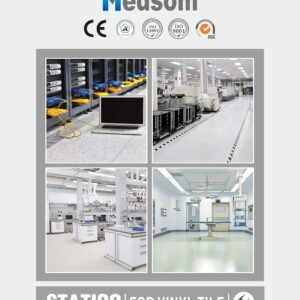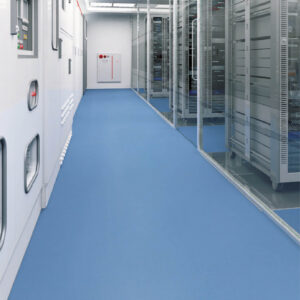Vinyl flooring
What Is Vinyl Flooring?
Vinyl flooring is made of polyvinyl chloride (PVC), with various compounds added to tailor the material’s characteristics such as color, flexibility, hardness and sheen.
The primary element in vinyl flooring is a simple vinyl sheet. To produce this, manufacturers suspend the vinyl in a liquid, creating a mixture that can be spread into a thin layer by a rolling process. From here this plastisol, or liquid plastic, coat is dried through an application of heat and air that fuses the material into a tough, durable sheet.
Vinyl flooring is a synthetic flooring material that is durable, affordable and easy to install. Vinyl is commonly confused with other types of flooring such as linoleum and laminate flooring. Luxury vinyl tile and planks are increasingly popular due to their versatility, ability to hold up in moist environments and realistic wood plank and stone tile appearance. So, which one is best for your home? To answer this question, you must first understand the differences between these popular flooring options.

Why Choose Vinyl Flooring?
While vinyl sheets and vinyl tiles were in vogue many years ago, new and improved versions are back in fashion as stylish, contemporary flooring options in a range of fabulous looks.
While vinyl sheets and vinyl tiles have their uses, vinyl plank flooring is quickly becoming the go-to product for use throughout the home due to its affordability and realistic timber-look finish.
Vinyl tiles, vinyl sheets and vinyl planks are:
- affordable
- low maintenance
- allergy friendly
- family friendly
- easily installed
- highly resilient
- easily cleaned
- aesthetically pleasing
- modern flooring options
for residential and commercial premises.
The benefits of choosing hardwearing, family friendly vinyl flooring include:
- The photographic finishes on vinyl planks are realistic.
- The innovative, layered construction is highly durable.
- The look is stylish and modern.
- They are stain-resistant, water resistant or waterproof, and low maintenance.
- Vinyl sheets and vinyl planks are affordable for budget-conscious families.
- Vinyl is quieter underfoot than other hard flooring options.
- Vinyl planks have a softer, more tactile feel to the bare foot than laminate or engineered timber planks.
- Vinyl planks are easily laid in strips fixed directly to the subfloor with adhesives.

How easy is it to install vinyl flooring sheet?
Vinyl flooring is easy to install. Exactly how to install it will depend on the type of product you choose and the room in which you are flooring. Vinyl sheet can be cut with a utility knife and is fairly easy to fit into a standard-shaped room. Vinyl tiles are installed similarly to ceramic tiles. Many don’t even require wet adhesive — simply peel and stick or click them together.
Another great feature of vinyl flooring is that it can be installed directly over any subfloor, concrete, plywood or hardwood, as well as existing vinyl. Make sure that the subfloor is in good condition, has no cracks, and is cleaned beforehand. If you’re installing vinyl over tiles, you need to use a leveling compound to ensure the floor is even and flat. A leveling compound is a mixture that can be used to smooth uneven surfaces to ensure you have a flat floor surface.
How to maintain and repair vinyl sheet flooring
A big reason vinyl sheet flooring is so popular is that cleaning is straightforward. Mopping and vacuuming are sufficient for cleaning your floor daily. If spills are left too long, though, they can stain or leave a residue so make sure to wipe them up as soon as possible. Also, never drag heavy furniture across vinyl as it can scratch or dent the floor. Use felt or rubber covers on the bottoms of chairs or table legs to prevent indentations and gashes.

Vinyl is durable, but not indestructible. It’s essential to take the correct measures to keep your floor in good condition. To preserve your vinyl flooring for as long as possible, avoid abrasive cleaning products, or products that contain acetone or solvents. Follow the manufacturer’s recommendations for the best way to clean and maintain your floor.
Repairing vinyl flooring depends on the type of product and the damage it’s sustained. You can easily replace individual damaged tiles, but if you have sheets, you may have to fuse the surface or patch in new material. This can be quite difficult and the results are not usually aesthetically appealing. It’s good to call in a professional for vinyl repair to minimize the risk of having to replace your entire floor.
Showing all 5 results
-
Vinyl flooring
SINCOL VINYL FLOOR MODEL TB
Rated 0 out of 50,0₫ Select optionsThis product has multiple variants. The options may be chosen on the product page -
Vinyl flooring
SINCOL VINYL FLOOR MODEL TA
Rated 0 out of 50,0₫ Select optionsThis product has multiple variants. The options may be chosen on the product page -
Vinyl flooring
SINCOL VINYL FLOOR MODEL TBA
Rated 0 out of 50,0₫ Select optionsThis product has multiple variants. The options may be chosen on the product page





